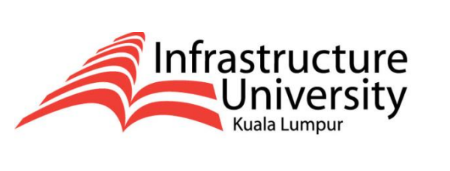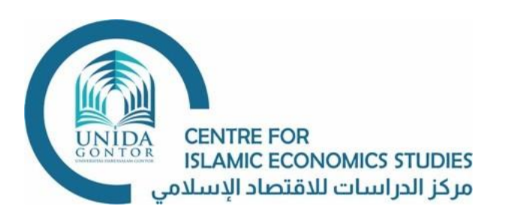The Role of Zakat on Economic Growth: Modification of the Mathematical Model from an Islamic Economic Perspective
DOI:
https://doi.org/10.21154/elbarka.v8i1.11949Abstract
Zakat is seen as a financial instrument that minimizes economic inequality and distributes wealth from the rich to the poor and needy. Empirical facts show that zakat can stimulate economic growth, increase consumption, investment and government spending. However, the role of zakat variable is often overlooked, especially in the context of mathematical model of economic growth. Therefore, this research seeks to evaluate the mathematical model of economic growth and modify it by involving zakat variable. It is important to conduct this research to measure the socio-economic impacts produced by zakat and analyze economic growth more comprehensively. The method used in this research is conceptual approach with library research. This research offers a mathematical model involving zakat variable in economic growth. The model offered is Y = C + I + G + Z + (X – M), where Z is the zakat. Thus, adding zakat variable to the mathematical model needs to be implemented to read economic dynamics comprehensively, especially in Muslim majority country such as Indonesia. The implications of this research play an important role in providing decision recommendations for policymakers and zakat institutions.
References
Anis, F. M., & Kassim, S. H. (2016). Effectiveness of Zakat-Based Programs on Poverty Alleviation and Economic Empowerment of Poor Women: a Case Study of Bangladesh. Journal of Islamic Monetary Economics and Finance, 1(2), 229–258. https://doi.org/10.21098/jimf.v1i2.539
Ashfahany, A. El, Hidayah, A. D. N., Hakim, L., & Noh, M. S. B. M. (2023). How Zakat Affects Economic Growth In Three Islamic Countries. Journal of Islamic Economic Laws, 6(1), 45–61. https://doi.org/10.23917/jisel.v6i1.21242
Ayuniyyah, Q., Pramanik, A. H., Saad, N. M., & Ariffin, M. I. (2022). The impact of zakat in poverty alleviation and income inequality reduction from the perspective of gender in West Java, Indonesia. International Journal of Islamic and Middle Eastern Finance and Management, 15(5), 924–942. https://doi.org/10.1108/IMEFM-08-2020-0403
BAZNAS. (2024). Peta Jalan Zakat Indonesia 2045. https://www.puskasbaznas.com/publications/books/2009-peta-jalan-zakat-indonesia-2045
Bouanani, M., & Belhadj, B. (2020). Does Zakat reduce poverty? Evidence from Tunisia using the Fuzzy Approach. Metroeconomica, 71(4), 1–16. https://doi.org/10.1111/meca.12304
BPS. (2025). Garis Kemiskinan (Rupiah/Kapita/Bulan) Menurut Daerah, 2024. https://www.bps.go.id/id/statistics-table/2/MTgyIzI=/garis-kemiskinan-rupiah-kapita-bulan-menurut-daerah.html
Choiriyah, E. A. N., Kafi, A., Hikmah, I. F., & Indrawan, I. W. (2020). Zakat and Poverty Alleviation in Indonesia: a Panel Analysis at Provincial Level. Journal of Islamic Monetary Economics and Finance, 6(4), 811–832. https://doi.org/10.21098/jimf.v6i4.1122
Farooq, M. O. (2011). Self-Interest, Homo Islamicus and Some Behavioral Assumptions in Islamic Economics and Finance. International Journal of Excellence in Islamic Banking and Finance, 1(1), 52–79. https://platform.almanhal.com/Files/Articles/7878
Gojali, D., Yakubi, Y., Setiawan, I., Zaky, M., & Rahmah, Y. F. (2024). Zakat And Economic Growth: Islamic Economic Perspective. Journal of Islamic Economics and Business, 4(1), 107–129.
Hasnat, M. A., Khandakar, H., Rahman, M. A., Islam, S. N., & Hasan, K. K. (2025). Capitalism in modern ignorance (jahilliyah): exploring Islamic alternatives to reshape human behaviour and provide solutions for the 21st century. International Journal of Islamic and Middle Eastern Finance and Management, 18(4), 975–991. https://doi.org/10.1108/IMEFM-08-2024-0393
Herianingrum, S., Supriani, I., Sukmana, R., Effendie, E., Widiastuti, T., Fauzi, Q., & Shofawati, A. (2024). Zakat as an instrument of poverty reduction in Indonesia. Journal of Islamic Accounting and Business Research, 15(4), 643–660. https://doi.org/10.1108/JIABR-11-2021-0307
Iqbal, M. M. (2015). Inclusive Growth with Zakat. The Pakistan Development Review, 54(4), 997–1010.
Janowitz, M. (1968). Harold D. Lasswell’s Contribution to Content Analysis. The Public Opinion Quarterly, 32(4), 646–653.
Jedidia, K. Ben, & Guerbouj, K. (2021). Effects of zakat on the economic growth in selected Islamic countries: empirical evidence. International Journal of Development Issues, 20(1), 126–142. https://doi.org/10.1108/IJDI-05-2020-0100
Keynes, J. M. (1936). The General Theory of Employment, Interest and Money. Macmillan.
Makrygiannikis, G., & Jack, L. (2018). Designing a conceptual methodology for structuration research. Meditari Accountancy Research, 26(1), 70–87.
Mansur, A., Kafabih, A., Hakim, A., & Fuad, L. (2025). The Role of Zakat and Taxes on Economic Growth. El-Qist: Journal of Islamic Economics and Business (JIEB), 14(2), 154–166. https://doi.org/10.15642/elqist.2024.14.2.154-166
Mawardi, I., Widiastuti, T., Al Mustofa, M. U., & Hakimi, F. (2023). Analyzing the impact of productive zakat on the welfare of zakat recipients. Journal of Islamic Accounting and Business Research, 14(1), 118–140. https://doi.org/10.1108/JIABR-05-2021-0145
Munfaati, A., Noviarita, H., & Anggraini, E. (2023). Effects of Zakat and Government Debt on the Indonesian Economy. Al-Kharaj: Jurnal Ekonomi, Keuangan & Bisnis Syariah, 5(2), 772–788. https://doi.org/10.47467/alkharaj.v5i2.1327
Puskas BAZNAS. (2024). Desain Target Pengumpulan dan Penyaluran Zakat 2025. https://www.puskasbaznas.com/publications/books/1923-outline-desain-target-pengumpulan-pendistribusian-dan-pendayagunaan-zakat-tahun-2025
Safitri, F. I., Maski, G., Noor, I., & Kuncoro, A. W. (2024). The Role of Zakat, Infaq and Shadaqah in Indonesia’s Economic Growth: An Islamic Perspective. Falah: Jurnal Ekonomi Syariah, 9(1), 17–30. https://doi.org/10.22219/jes.v9i1.30217
Saidurrahman. (2013). The politics of zakat management in Indonesia: The tension between BAZ and LAZ. Journal of Indonesian Islam, 7(2), 366–382. https://doi.org/10.15642/JIIS.2013.7.2.366-382
Shirazi, N. S. (2014). Integrating Zakat and Waqf into the Poverty Reduction Strategy of the IDB Member Countries. Islamic Economic Studies, 22(1), 79–108. https://doi.org/10.12816/0004131
Sholihin, M., Sugiyanto, C., & Susamto, A. A. (2023). A systematic review on homo Islamicus: classification and critique. Islamic Economic Studies, 30(2), 121–142. https://doi.org/10.1108/ies-11-2022-0043
Smith, A. (1776). An Inquiry into the Nature and Causes of the Wealth of Nations.
Sulaeman, & Ninglasari, S. Y. (2020). Analysing the Behavioral Intention Factors in Using Zakat-Based Crowdfunding Platform in Indonesia: A Quantitative Study. International Journal of Zakat, 5(3), 1–19. https://doi.org/10.37706/ijaz.v5i3.267
Suprayitno, E. (2018). Zakat and SDGs : The Impact of Zakat on Economic Growth, Consumption and Investment in Malaysia. Andavnces in Economics, Business and Management Research, 101, 202–209. https://doi.org/10.2991/iconies-18.2019.39
Suprayitno, E. (2020). The Impact of Zakat on Economic Growth in 5 State in Indonesia. International Journal of Islamic Banking and Finance Research, 4(1), 1–7. https://doi.org/10.46281/ijibfr.v4i1.470
Widiastuti, T., Mawardi, I., Zulaikha, S., Herianingrum, S., Robani, A., Al Mustofa, M. U., & Atiya, N. (2022). The nexus between Islamic social finance, quality of human resource, governance, and poverty. Heliyon, 8(12), 1–10. https://doi.org/10.1016/j.heliyon.2022.e11885
Widiastuti, T., Ningsih, S., Prasetyo, A., Mawardi, I., Herianingrum, S., Robani, A., Al Mustofa, M. U., & Hady, A. F. (2022). Developing an integrated model of Islamic social finance: toward an effective governance framework. Heliyon, 8(9), 1–10. https://doi.org/10.1016/j.heliyon.2022.e10383
Yusuf, M. Z., Aufa, M. F., & Umam, K. (2024). Blockchain Zakat in Law Perspective and Its Implication on Zakat Management. Istinbath: Journal of Islamic Law and Economics, 23(2), 292–305. https://doi.org/https://doi.org/10.20414/ijhi.v23i2.720
Downloads
Published
Issue
Section
License
Copyright (c) 2025 Muhammad Zulfikar Yusuf

This work is licensed under a Creative Commons Attribution-NonCommercial 4.0 International License.
El-Barka: Journal of Islamic Economics and Business allow the author(s) to hold the copyright without restrictions and allow the author(s) to retain publishing rights without restrictions, also the owner of the commercial rights to the article is the author.





